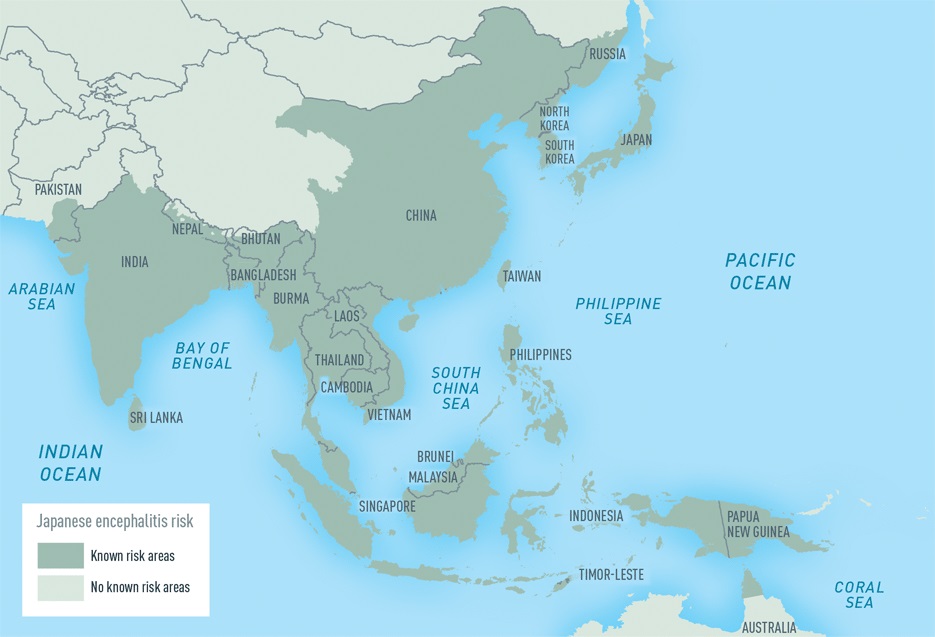Japanese Encephalitis

Japanese encephalitis is an arboviral disease (i.e. a disease due to a virus transmitted by an arthropod).
Epidemiology
The estimated annual incidence of the disease is 1/160 000 but it is 20 times higher in endemic areas. It mainly occurs in rural areas of China, Korea and Japan, in sub-tropical regions of Asia, and in some regions of Oceania. Imported cases are exceptional. The disease is symptomatic in 1-20/1000 infections, and children and young adults are predominantly affected.
Clinical description
After an incubation period of four to 14 days, infected individuals present with signs ranging from moderate with a headache and low-grade fever to more severe infection with high fever, meningeal syndrome (neck stiffness, vomiting), disorientation and sometimes tremors or coma.
Etiology
The disease is caused by a flavivirus spread by wild birds, amplified by domestic pigs, and transmitted to humans mainly by a mosquito of the genus Culex.
Management and treatment
There is no specific treatment, but intensive supportive therapy should be provided. A vaccine is available, but its prescription should be adapted to each case and depends on the risks of transmission when travelling to endemic areas (length of the stay, transmission season, visits to rural areas).
Prognosis
The disease, when it is symptomatic, can leave neurological sequelae and leads to death in 25 to 30% of the cases.